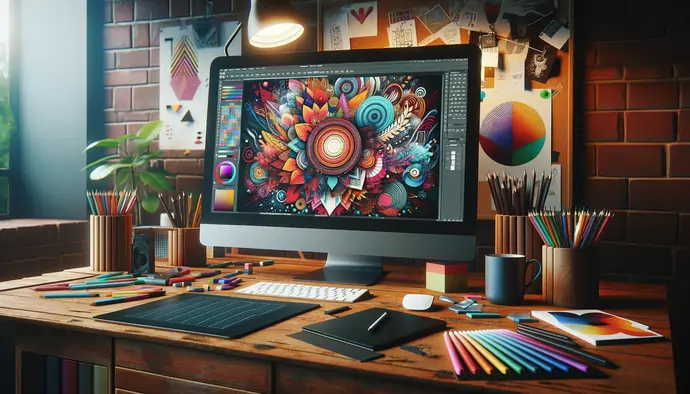Hydra Tech Insights
Stay updated with the latest in technology and gaming.
Design Software: Your New Creative Sidekick
Unlock your creativity with top design software! Discover tools that transform your ideas into stunning visuals—your ultimate creative sidekick awaits!
Top 5 Design Software Tools to Elevate Your Creative Workflow
In the ever-evolving landscape of design, having the right tools can significantly enhance your creative workflow. Here are the Top 5 Design Software Tools that every designer should consider:
- Adobe Creative Cloud: A powerhouse in design software, Adobe offers a comprehensive suite including Photoshop, Illustrator, and InDesign, catering to graphics, photos, and layout designs.
- Sketch: Primarily used for web and mobile UI/UX design, Sketch provides an intuitive interface and facilitates collaboration through shared libraries and plugins.
- Canva: Ideal for beginners, Canva's drag-and-drop functionality and extensive template library make it easy to create stunning graphics without prior design experience.
- Figma: A cloud-based design tool, Figma is perfect for real-time collaboration, allowing teams to work together seamlessly on web and mobile projects.
- CorelDRAW: Known for its vector graphic design capabilities, CorelDRAW is favored by illustrators and graphic designers for its versatile and powerful tools.

How to Choose the Right Design Software for Your Needs
Choosing the right design software can significantly impact your project outcomes and efficiency. With a plethora of options available, it’s crucial to start by assessing your specific needs. Consider the type of design work you will be doing—be it graphic design, web design, or 3D modeling. Make a list of features that are essential for your projects, such as photo editing capabilities, vector support, or collaboration tools. Additionally, think about your skill level; certain software may be better suited for beginners, while others cater to advanced users who require more complex functionalities.
Once you've identified your needs, examine the available design software options and compare their offerings. Look for user reviews and ratings to gauge the experiences of others with the software. It's also beneficial to test out trial versions when available, as this allows you to get hands-on experience before making a purchase. Keep in mind the importance of customer support and regular updates, which can enhance your overall user experience. By carefully considering these factors, you can make an informed decision that aligns perfectly with your design goals.
Unlocking Your Creativity: Tips for Maximizing Your Design Software
Unlocking your creativity can significantly enhance your design projects, and one of the most effective ways to do that is by maximizing your design software. Start by familiarizing yourself with the full range of tools and features available in your chosen software. Dedicate time to explore tutorials and user manuals that provide insights into advanced functionalities. Incorporating shortcuts into your workflow can significantly streamline your design process, allowing you to focus on being creative rather than getting bogged down in technical details.
Another vital tip is to regularly challenge yourself with new design projects that push the boundaries of your existing skills. Join design communities, participate in contests, or follow design challenges, as these can serve as inspiration and encourage you to experiment with different styles and techniques. Additionally, setting aside specific time for creative brainstorming sessions can lead to breakthroughs that rejuvenate your design perspective. Remember, the key to unlocking your creativity lies within your willingness to explore and adapt your design software to suit your unique artistic vision.